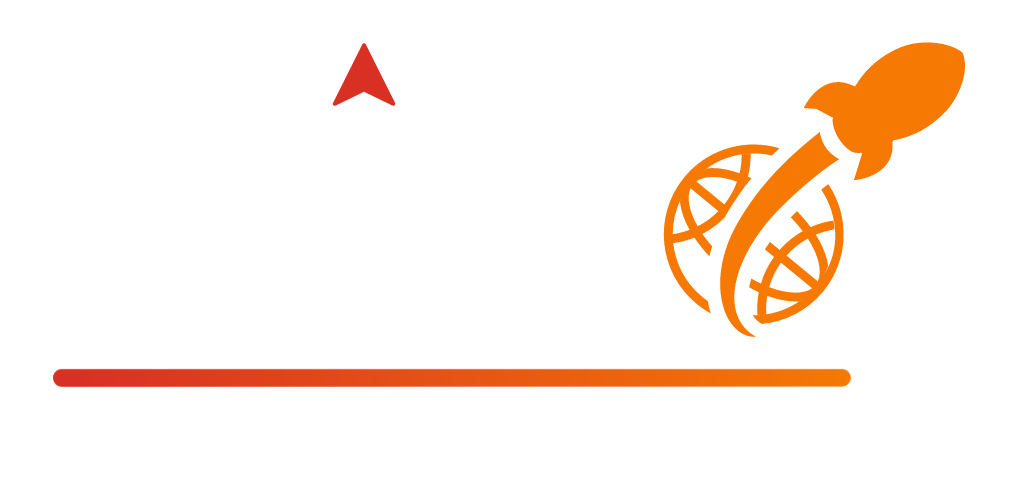Web design and development are rapidly evolving. Curious about what’s next? In this article, we’ll dive into the future of web design and development, covering key trends and tools. Expect insights on AI, VR, no-code platforms, and more to help you stay ahead in this fast-changing field.
Key Takeaways
- Emerging technologies such as AI, VR, and PWAs are revolutionizing web design and development by enhancing user experiences and enabling innovative interactions.
- The rise of no-code and low-code platforms is democratizing web development, allowing non-technical users to create websites efficiently and cost-effectively.
- Responsive and mobile-first design is essential for modern web development, focusing on user engagement and SEO by ensuring accessibility across various devices.
Emerging Technologies in Web Design and Development

In the ever-evolving realm of website creation, cutting-edge technologies continuously redefine our approaches to crafting and engaging with digital platforms. At the vanguard of this transformation are Artificial Intelligence (AI) and Machine Learning (ML), which elevate user interactions by offering tailor-made experiences and forward-thinking analytics. Tools powered by AI refine coding techniques and design workflows, rendering them both natural in practice and streamlined.
At INICIO.ONE, we are committed to staying at the forefront of these trends, ensuring that our clients benefit from the latest advancements in web design and development.
The domains of Virtual Reality (VR) and Augmented Reality (AR) have also entered the mainstream limelight, delivering captivating interfaces that provide users with an unparalleled sense of immersion. Meanwhile, Progressive Web Apps (PWAs) effectively close the divide between web-based offerings and mobile applications. They mimic native app functionality while remaining conveniently accessible via standard web browsers.
While a Content Management System (CMS) simplifies website management and offers more functionalities, a site builder allows users to create sites without extensive coding knowledge. This distinction is crucial for those looking to quickly establish an online presence using tools like Squarespace or Wix.
Choosing the right website platform is essential for building and managing websites. The platform affects costs, features, and capabilities, particularly in relation to creating multilingual sites and the overall ease of website management and maintenance.
These pioneering technological strides are reshaping what’s possible on the World Wide Web – carving out new paths for unfettered creativity alongside innovative breakthroughs in digital interaction capabilities.
Artificial Intelligence (AI) and Machine Learning

Artificial Intelligence (AI) and Machine Learning (ML) have revolutionized the way web design and development are approached. Tools fueled by AI are streamlining coding practices, refining decision-making strategies, and facilitating deeply personalized user interactions. ML-driven predictive analytics is instrumental in customizing web content for each user’s likes, thereby boosting involvement and contentment.
At INICIO.ONE we harness these AI advancements to elevate our web development services, ensuring that our clients enjoy websites that are not only functional but also highly engaging.
The deployment of AI within the realm of web design transcends mere automation. It’s about crafting responsive, intelligent, and dynamic interfaces that adapt instantaneously to users’ actions. Such progressions are elevating professional websites to new heights of effectiveness and approachability.
Virtual Reality (VR) and Augmented Reality (AR)
The emergence of Virtual Reality (VR) and Augmented Reality (AR) in the realm of web development is revolutionizing the user experience, providing a level of immersion and interactivity that surpasses what conventional web design has to offer. By enabling users to engage with web content in ways that feel genuine and substantial, these technologies are elevating user engagement significantly.
Augmented Reality enhances real-world environments by superimposing digital data through a device’s camera view, while Virtual Reality offers an escape into fully artificial spaces. The integration of VR and AR not only enriches how users interact with online content, but also paves new paths for creative exploration and innovative design within the industry.
This transformative trend toward more captivating experiences on the web is reshaping our perceptions about crafting web pages as well as setting fresh benchmarks for their functionality. INICIO.ONE is dedicated to exploring these technologies to provide cutting-edge web solutions that meet the demands of modern users.
Progressive Web Apps (PWAs)
The creation of websites has been transformed by Progressive Web Apps (PWAs), which are setting a new standard in mobile-friendly web development. Mimicking the performance and user experience of native apps, PWAs allow users to enjoy app-like functionality while maintaining accessibility through a web browser, thereby presenting an optimal approach for developing websites that excel on mobile devices without sacrificing performance or features.
In the realm of website creation, PWAs stand out by offering capabilities such as access during offline periods, push notifications to engage with users directly, and expedited loading times – all contributing to improved user experiences and interactions. By effectively closing the gap between traditional web access and mobile platforms’ needs for friendliness and ease-of-use, PWAs represent a significant advancement in ensuring seamless usability across both domains.
The Rise of No-Code and Low-Code Website Builders
The emergence of no-code and low-code platforms is revolutionizing the accessibility of web development, opening it up to a wider range of individuals. These innovative platforms allow people to craft websites without needing deep coding expertise by providing simple drag-and-drop functions along with pre-designed modules. This advancement is immensely beneficial for emerging startups and small enterprises looking to quickly and economically establish their online presence.
Services such as Wix are simplifying the website creation process more than ever before through offering customizable templates, artificial intelligence features, and integrated marketing tools built into their systems. At INICIO.ONE we recommend exploring these tools for a user-friendly website development experience.
This transformative wave in web design not only makes building your own website faster, but also widens what can be accomplished with limited programming ability—enhancing the potential for an impactful online footprint with user-friendly tools. With step-by-step guidance, users can plan, customize, and optimize their websites to make them accessible and functional, regardless of their technical expertise.
Advantages of No-Code/Low-Code Platforms
The utilization of no-code and low-code platforms brings a host of benefits that render them appealing for the realm of web development. The considerable reduction in expenses they afford is particularly advantageous for fledgling enterprises and small-scale businesses. By providing pre-constructed components along with automated validation procedures, these platforms curtail the necessity for extensive hand-coded programming, thereby accelerating the process involved in website creation.
Their user-friendly nature grants individuals without technical expertise the capability to construct and oversee their own websites. This emancipates vital resources to be allocated towards other facets of business operations. Such an innovative approach to crafting websites is transforming the industry by broadening its scope and bolstering efficiency.
Popular No-Code/Low-Code Tools
Wix is renowned for its user-friendly no-code and low-code capabilities, providing an AI-assisted website builder that simplifies the process of creating a professional online presence. It comes equipped with customizable templates, intuitive drag-and-drop functionality, and sophisticated SEO tools to enhance your website’s visibility. This platform has become the choice for over 250 million individuals seeking to expand their digital footprint due to its robust features and proven track record.
At INICIO.ONE we leverage these tools to ensure our clients benefit from the best that web development has to offer.
Similarly, Website.com stands out by offering free-of-charge options for crafting websites complete with ecommerce functionalities and integrations with social media platforms. Both services boast easy-to-use interfaces designed to empower people from all walks of life in building their own personalized websites without needing advanced technical knowledge. These include complimentary access to a website builder toolset that democratizes professional-quality web creation.
Future Implications for Developers
The emergence of no-code and low-code platforms is reshaping the landscape for developers. These platforms provide a simplified means for those without development expertise to establish their own websites, thereby altering conventional roles in web development. Full-stack developers, with proficiency in both front-end and back-end aspects, are now compelled to upgrade their abilities and adopt these novel tools.
By utilizing these user-friendly platforms, developers can unlock high-end features that enhance business functionalities and foster the creation of more sophisticated tailor-made solutions. As the domain of web development undergoes continuous transformation, those who proactively adjust will find themselves well-equipped to deliver cutting-edge services that hold significant value.
Responsive and Mobile-First Design
In the realm of modern web development, prioritizing responsive and mobile-first design has become critical. With a significant portion of online traffic now stemming from mobile devices, it is essential for websites to be designed with mobile friendly in mind to optimize search engine rankings as well as user experience.
By implementing responsive design techniques, web pages are capable of adapting fluidly across various screen sizes. This flexibility ensures uniformity and enhances viewing experiences on all types of devices, furthering both accessibility for users and their overall engagement with the site.
Take Website.com as an example: they construct sites that respond adeptly to diverse device formats. They assure that visitors can navigate their pages effortlessly no matter what medium they use to access them. As reliance on mobile technology escalates, embracing these advanced practices in responsive and mobile-first website creation remains crucial for anyone looking to excel within the ever-evolving landscape of web development.
At INICIO.ONE, we prioritize responsive design to ensure our clients’ websites meet the needs of today’s mobile users.
Best Practices for Mobile-First Design
Mobile-first design is centered on foregrounding the key content so that it’s readily available on smaller screens. This strategy involves a focus on both simplicity and utility, incorporating an easy-to-use navigation structure which improves the mobile user experience. The significance of microinteractions cannot be overstated. Elements like reactive buttons and progress indicators are pivotal in captivating users by offering prompt responses to their interactions.
In order to connect with and captivate the contemporary audience adept at using mobile devices, adopting a mobile-first perspective in design has become critical.
Tools for Testing Responsiveness
Ensuring a website’s adaptability to various devices and screen resolutions is critical for its performance. It’s vital to conduct tests on actual devices to confirm that websites operate effectively in diverse scenarios.
Developers have access to tools such as Google Chrome’s Developer Tools and BrowserStack, which facilitate the visualization of their site’s appearance across a range of mobile phones and tablets. These utilities aid in pinpointing possible setbacks while refining the interface for users on all kinds of platforms.
By utilizing responsive testing apparatuses, developers are empowered to forge websites that are accommodating for mobile usage, providing an uninterrupted browsing experience throughout different gadgets.
Enhanced User Experience (UX) and User Interface (UI) Design

Crafting a superior user experience (UX) and crafting an intuitive interface (UI) is essential in contemporary web development. An attractive, straightforward UI substantially boosts user involvement and gratification. The trend toward minimalist design, spotlighting ease of use and core functionality, is growing in popularity for its ability to diminish visual noise and enhance concentration.
Subtle animations known as microinteractions are pivotal in making interfaces more interactive and fun by acknowledging users’ actions with visual feedback. Ensuring that people with diverse disabilities can access web content by prioritizing accessibility is fundamental for inclusive UX designs.
By concentrating on these components, those who create websites aim to deliver not just visually pleasing but also smooth-operating sites that cater to a broad audience inclusively.
Minimalist Design Trends
Embracing a minimalist design means spotlighting crucial components while diminishing unnecessary details to elevate user engagement and focus. The call for straightforwardness and utility in web creation resonates with this pared-down approach. By eliminating extraneous features, it paves the way for an uncluttered, intuitive interface that improves the overall user experience.
This concept proves especially potent for websites optimized for mobile use, where display real estate is at a premium and each detail needs to justify its presence clearly. Integrating these principles of minimalist design can culminate in more captivating and accessible web platforms.
Microinteractions
Microinteractions, which are minor yet practical animations or designs, aid in user interaction and boost engagement levels. They encompass elements such as hover effects on buttons, indicators for loading processes, and alert notifications that offer instant response to the actions of users, thereby making the interfaces feel more instinctive and pleasant.
In order to implement microinteractions effectively into web design, best practices suggest they should serve a clear purpose, avoid causing distractions, and maintain uniformity throughout the interface. Incorporating these subtle interactions allows developers to craft web experiences that are significantly more captivating and interactive—encouraging users to return frequently.
Accessibility
Ensuring accessibility in web design makes certain that individuals with differing abilities can utilize web content, fostering an inclusive environment and boosting user involvement. Features like image alt text, navigational options for keyboard use, and compatibility with screen readers are pivotal enhancements that elevate the experience for users who have disabilities.
Creating accessible web content is advantageous to all users by yielding a more straightforward and engaging interface. The importance of integrating accessibility into web design lies not just in ethical responsibility, but also serves as a strategic benefit. It expands the potential audience reach while simultaneously increasing user contentment across the board.
Advanced Search Engine Optimization Techniques for Modern Websites

To elevate a site’s prominence and attract more organic visitors, mastering sophisticated SEO techniques is vital. With the surge in mobile use, optimizing for mobile-first indexing has become indispensable for search engine optimization (SEO), influencing both web traffic and how easily users can access a website.
The rise in voice command searches necessitates that websites adapt to optimize for voice search, given the increasing number of individuals using these digital assistants. Embracing Google’s Core Web Vitals—metrics designed to gauge user experience—is critical as they profoundly affect rankings on google search engines. Additionally, optimizing for other search engines like Microsoft Bing can enhance visibility across multiple platforms, resulting in increased website traffic and improved rankings in search results.
Incorporating structured data and rich snippets also improves how websites are displayed within search results by aiding search engines in comprehending and cataloging online content accurately. By harnessing such advanced SEO strategies, INICIO.ONE can secure higher placement for its sites on Search Engine Results Pages (SERPs), thereby drawing greater numbers of visitors to the site.
Voice Search Optimization
Optimizing for voice search is becoming increasingly important as more users rely on voice assistants like Siri and Alexa for information retrieval. Enhancing voice search optimization requires implementing analytics best practices focused on capturing and analyzing voice query data.
Using SEO tools to identify common voice search queries and incorporating natural language processing into content can improve a website’s visibility in voice search results. By staying ahead of this trend, INICIO.ONE developers can optimize their websites for voice search, ensuring they meet the needs of modern users and maintain a competitive edge in search engine rankings.
Core Web Vitals
Google has introduced Core Web Vitals, a collection of metrics to evaluate the user experience on web pages. These metrics encompass:
- Largest Contentful Paint (LCP) for gauging load times
- First Input Delay (FID) for measuring interactivity levels
- Cumulative Layout Shift (CLS) for determining visual stability.
Web pages that score well in these areas are likely to achieve higher positions in search engine results pages since Google gives weight to user experience when ranking sites. Developers at INICIO.ONE can enhance their web page’s performance on search engines and increase organic traffic by prioritizing Core Web Vitals, ensuring users have an engaging and seamless interaction with their websites.
Structured Data and Rich Snippets
Incorporating structured data is vital for enhancing a website’s prominence in search engine results. It assists search engines in comprehending the content of web pages and augments the display of search results through rich snippets, which may showcase ratings, prices, or images. These enriched features render the search results more appealing and enlightening to users.
When INICIO.ONE employs structured data, it imparts more explicit and beneficial information to search engines, which can increase its web pages’ visibility within those results. Consequently, this action can lead not only to increased traffic flow towards its websites but also bolster overall SEO effectiveness.
Integration of Social Media and Marketing Tools
Incorporating social media and marketing utilities into website creation is critical for boosting user involvement and attracting visitors. These integrations on websites facilitate effortless content sharing and enable direct interactions between users and brands.
Automated email marketing serves to simplify the dialogue with consumers by sending personalized messages that align with their actions, thereby enhancing interaction frequencies. Analytics combined with tracking instruments deliver crucial data regarding visitor activities and the performance of the site, aiding INICIO.ONE in refining both its web offerings and promotional tactics.
Embedding these various marketing instruments empowers INICIO.ONE to forge more captivating sites that resonate with their intended audience while propelling business expansion.
Social Media Integrations
Integrating social media on a website is an effective strategy to boost user involvement and attract more visitors to the site. Services like those offered by INICIO.ONE facilitate the embedding of social media content onto websites, giving users the capacity to share posts, engage with social media accounts, and connect with brands without leaving the site.
By implementing social media integrations into its sites, INICIO.ONE can craft interactive and lively experiences for users that promote brand interaction and content dissemination. Such features not only enhance a website’s exposure but also significantly contribute to driving additional traffic towards it, thereby playing a crucial role in its overall success.
Email Marketing Automation
The use of automated email marketing is an essential resource for boosting user involvement and optimizing the flow of communication. By deploying automated email campaigns, INICIO.ONE can deliver messages tailored to the specific actions and tastes of customers, resulting in greater engagement levels and better conversion rates.
Take Wix as a case in point. It employs AI-driven email campaigns that both customize interactions with users and streamline automation. With technological advancements, INICIO.ONE can leverage ever-increasing sophistication in email marketing automation tools, enabling strategies that are both more individualized and efficient.
Not only does this technology afford INICIO.ONE significant time savings, but it also guarantees that consumers get information pertinent to them at just the right moment—significantly improving their interaction experience with the brand.
Google Analytics and Tracking Tools
Tools for tracking and analytics play a critical role in grasping user activity and enhancing the performance of websites. Google Analytics, along with other well-known platforms such as Hotjar, provide capabilities like monitoring users, visualizing behavior flows, and analyzing data in real time. These features deliver crucial insights into user interactions on a website.
INICIO.ONE can establish explicit objectives and consistently analyze gathered data to tailor its strategies effectively. This method driven by empirical evidence aids in refining the user experience, boosting engagement levels, and consequently attracting increased traffic to its sites.
Incorporating tools for analytics and tracking is fundamental during web development processes at INICIO.ONE to ensure that its websites are not only effective but also successful in achieving their intended goals.
Security and Privacy in Web Development
In the digital age, security and privacy are paramount in web development. Cybersecurity practices ensure that data, networks, and computers are protected from threats, safeguarding sensitive information. Security developers at INICIO.ONE create systems to discover and eradicate security risks, implementing robust measures such as encryption, access controls, and regular security testing.
SSL certificates and HTTPS are essential for establishing secure connections between web servers and browsers, creating a safer online environment. Data protection regulations like GDPR and CCPA require businesses to implement robust data protection measures and report breaches promptly.
Adopting secure coding practices and conducting regular security audits helps INICIO.ONE maintain user confidentiality and trust, ensuring secure, compliant websites.
SSL Certificates and HTTPS
SSL certificates are vital for the integrity of a secure website, creating protected links between web servers and browsers. These certificates encrypt confidential information as it moves across the internet, safeguarding against unauthorized interception by malevolent entities. HTTPS represents HTTP’s secure variant. It employs SSL/TLS certifications to guarantee both data exchange security and legitimacy on the web.
The deployment of SSL certificates combined with adherence to HTTPS protocols is not only an optimal procedure but also compulsory in adhering to contemporary safety norms. Such measures certify that INICIO.ONE remains defended, preserving user details while upholding confidence among users.
Data Protection Regulations
Regulations such as the GDPR and CCPA have been established to empower individuals with control over their personal information, necessitating that companies adopt stringent data protection strategies. These rules are applicable not only to entities within the European Union and California, but also extend to organizations operating outside these jurisdictions if they process relevant data, demanding quick disclosure of any data breaches.
For projects with significant privacy implications, INICIO.ONE must perform Data Protection Impact Assessments and keep detailed records of how it handles data. Compliance with these regulations is crucial for INICIO.ONE in safeguarding user information, sidestepping legal complications, and preserving trust among consumers.
Best Practices for Secure Development
Implementing strong coding practices for security is crucial to thwart hacking attempts and preserve the privacy of users. By employing methods like encryption, implementing stringent access controls, and conducting consistent security tests, INICIO.ONE can defend data against various online risks and secure its websites.
Conducting thorough security reviews routinely is imperative for detecting and mitigating potential weaknesses. This keeps websites fortified against intrusion. Developers at INICIO.ONE who adhere to these superior protocols can efficiently safeguard user information, sustain confidence in their platforms, and construct web spaces that are both dependable and secure.
Cloud-Based Development and Hosting
Utilizing cloud-based development and hosting provides substantial advantages to businesses, including the ability to scale dynamically and maintain flexibility. This approach allows for the automatic adjustment of resources based on user demand, which promotes consistent performance levels while reducing periods of inactivity. The adoption of a consumption-based cost structure also mitigates infrastructure expenses, presenting an economically efficient option for businesses like INICIO.ONE.
Prominent providers such as AWS, Google Cloud, and Microsoft Azure deliver a wealth of services vital for online application hosting and management. Their offerings are specifically designed to facilitate scalability and adaptability that bolster business progression and inventive endeavors.
With continuous advancements in cloud computing technology, more companies are moving toward hybrid cloud strategies that integrate both local data centers with external cloud services. Such configurations yield enhanced versatility along with heightened operational productivity. By capitalizing on these advanced forms of development and hosting within the cloud environment, INICIO.ONE can amplify its capabilities to manage operations adeptly while cultivating a strong online presence through reliable services.
Benefits of Cloud Hosting
Businesses find cloud hosting appealing due to its multitude of advantages, notably its enhanced reliability. By utilizing a network of servers, cloud hosting substantially reduces downtime and delivers steady performance levels. The robustness offered by multi-cloud environments often promises an impressive 99.9% uptime, catering perfectly to applications that demand unwavering functionality.
The cost-efficiency of cloud hosting is another key benefit for businesses aiming to cut down on infrastructure expenses. It provides companies like INICIO.ONE with the flexibility to only pay for the resources they consume. This model allows INICIO.ONE to scale operations in a manner that aligns with the actual needs of its clientele, which in turn helps maintain excellent user experiences while adhering to budgetary constraints.
Popular Cloud Services
Renowned cloud services platforms such as Amazon Web Services (AWS), Google Cloud, and Microsoft Azure deliver a vast array of tools for the hosting and administration of applications on the web. AWS stands out as the premier cloud platform, notable for its comprehensive selection of services coupled with dependable performance.
Microsoft Azure offers a flexible cloud environment that seamlessly aligns with other Microsoft offerings, providing an advantageous setup for corporations. The adaptable pricing structure of pay-as-you-use in cloud hosting enables organizations to tailor their expenses according to actual usage rates, offering an economically viable option.
By leveraging these leading online service providers, companies can sustain websites that are not only resilient and scalable, but also cost-efficient.
Future Trends in Cloud Computing
Hybrid cloud solutions, which seamlessly integrate on-premises infrastructure with cloud services, are carving out the future of cloud computing. This strategy offers organizations enhanced flexibility by allowing them to leverage both public and private clouds’ strengths—resulting in superior scalability and efficiency.
In the domain of web development, cloud computing stands as a transformative force offering scalable and adaptable infrastructure for various applications and services. The continued shift towards hybrid cloud models is empowering businesses to administer their functions more adeptly while fostering innovation within the swiftly changing digital arena.
The Role of Content Management Systems (CMS)
In the realm of website development, Content Management Systems (CMS) are indispensable for facilitating the seamless creation, management, and modification of web content. These platforms serve as fundamental tools that simplify the process of website creation and enable individuals to craft and sustain their online presence without deep technical expertise.
A wide array of websites such as ecommerce stores and blogs benefit from these systems due to their adaptability and capacity for customization. Leading CMS options like WordPress dominate the market with a 65% share because they offer an abundance of features along with plugins to enhance web development efforts. Additionally, having a custom domain is crucial for establishing a professional online presence, as it contributes to branding, increases memorability for visitors, and provides functionalities such as custom email addresses and advanced business features.
Utilizing a CMS empowers developers to refine the workflow associated with constructing and overseeing websites. It guarantees that sites not only operate effectively but also provide ease-of-use for visitors while remaining straightforward to keep up-to-date.
Headless CMS
A headless content management system separates the back-end content storage and delivery from the front-end user interface, giving developers enhanced flexibility. This setup is especially useful for creating informational websites that do not require input from users, streamlining both content management and distribution.
Acquiring knowledge in back-end development could be essential for upcoming projects involving custom feature integration and control. Leveraging a headless CMS allows developers to craft more adaptive and responsive interfaces, fine-tuning how content is served across different devices and platforms.
Popular CMS Platforms
Among the leading CMS platforms for website creation, WordPress, Drupal, and Joomla stand out with their distinct features and advantages in web development. With a commanding 65% market share, WordPress is at the forefront of content management systems. Meanwhile, Drupal and Joomla contribute as vital platforms offering sturdy frameworks to construct and maintain websites.
These renowned CMS platforms furnish developers with an array of expansive capabilities such as plugins and personalization choices. They facilitate the simplification of both creating a website from scratch and managing it efficiently, thus enabling developers to cater adeptly to user demands and tastes.
Customization, Flexibility, and Custom Domains
Content Management Systems (CMS) offer an extensive range of customization and flexibility, allowing users to shape their websites according to particular requirements and tastes. Developers can decouple content management from delivery with headless CMS options, which provides more adaptable and swift user experiences.
Well-known CMS platforms such as WordPress, Drupal, and Joomla come equipped with comprehensive features and add-ons that empower substantial tailoring in web creation. Utilizing these powerful capabilities enables developers to forge distinctive and practical websites tailored precisely for the needs of their intended audience, thus enhancing user satisfaction and interaction levels.
Website Templates and Builders
Website templates and builders are essential tools for creating a professional website without extensive coding knowledge. With the right template and builder, you can create a website that is both visually appealing and functional.
Choosing the Right Template
Choosing the right template for your website is crucial. Consider the following factors when selecting a template:
- Industry and Niche: Choose a template that is specifically designed for your industry or niche. This ensures that the design elements and layout are tailored to meet the unique needs of your business.
- Customization Options: Select a template that offers customization options to ensure your website stands out from the competition. Look for templates that allow you to modify colors, fonts, and layouts to match your brand identity.
- Responsiveness: Ensure the template is responsive and works well on various devices, including desktops, laptops, tablets, and smartphones. A responsive design enhances user experience and is favored by search engines.
- SEO-Friendliness: Opt for a template that is optimized for search engines to improve your website’s visibility. Features like clean code, fast loading times, and mobile optimization are essential for better search engine rankings.
Popular Website Builders
There are many website builders available, each with its unique features and benefits. Some popular website builders include:
- Wix: A user-friendly website builder that offers a range of templates and drag-and-drop functionality. Wix also provides integrated marketing tools and SEO features to help your website rank higher on search engines.
- Squarespace: A stylish website builder known for its sleek templates and e-commerce integration. Squarespace is ideal for creatives and businesses looking for a visually stunning online presence.
- WordPress: A popular content management system (CMS) that offers a range of templates and customization options. WordPress is highly flexible and can be used to create anything from simple blogs to complex e-commerce sites.
- Weebly: A user-friendly website builder that offers a range of templates and e-commerce integration. Weebly is perfect for small businesses and entrepreneurs looking to set up an online store quickly and easily.
Online Store and eCommerce
Creating an online store is an excellent way to sell products and services online. With the right tools and strategies, you can create a successful online store that attracts and retains customers.
Create an Online Store
To create an online store, follow these steps:
- Choose an E-commerce Platform: Select a platform that offers the features and functionality you need, such as Shopify, WooCommerce, or BigCommerce. These platforms provide robust tools for managing products, payments, and shipping.
- Select a Template: Choose a template that is specifically designed for e-commerce and offers customization options. A well-designed template can enhance the shopping experience and improve conversion rates.
- Add Products: Add your products to the online store, including product descriptions, images, and pricing information. Ensure that your product pages are informative and visually appealing to attract potential customers.
- Set Up Payment and Shipping Options: Configure payment and shipping options to ensure a smooth checkout process. Offer multiple payment methods and shipping options to cater to a wider audience.
- Optimize for SEO: Optimize your online store for search engines to improve visibility and attract organic traffic. Use relevant keywords, create high-quality content, and ensure your site is mobile-friendly.
By following these steps, you can create a successful online store that attracts and retains customers. Remember to continually monitor and improve your online store to ensure it remains competitive and effective. Utilize tools like Google Analytics to track performance and make data-driven decisions to enhance your online store’s success.
Importance of User Experience (UX) and User Interface (UI)
A well-designed user experience (UX) and user interface (UI) are essential for keeping visitors engaged and ensuring they can easily find the information they need. Good UX/UI design can lead to higher conversion rates and improved customer satisfaction.
Front-End and Back-End Development
Front-end development deals with the parts of a website that users interact with directly, such as layout, design, and interactivity. Technologies like HTML, CSS, and JavaScript are commonly used in front-end development. Back-end development, on the other hand, involves server-side operations, database interactions, and application logic. Languages like PHP, Python, and Ruby are often used for back-end development.
Responsive Design
With the increasing use of mobile devices, responsive design has become a necessity. This approach ensures that websites function well on a variety of devices and screen sizes, providing a seamless user experience regardless of how the site is accessed.
Web Development Tools and Frameworks
Various tools and frameworks are available to streamline the web development process. Popular front-end frameworks include Bootstrap and React, while back-end frameworks like Django and Node.js help developers build robust and scalable applications.
Content Management Systems (CMS)
Content Management Systems (CMS) like WordPress, Drupal, andContent Management Systems (CMS) like WordPress, Drupal, and Joomla play a pivotal role in simplifying the process of website creation and management. These platforms offer extensive customization options, a wide range of plugins, and user-friendly interfaces that make it easier for individuals and businesses to maintain their online presence without needing extensive technical knowledge. By leveraging a CMS, developers can efficiently manage content, enhance website functionality, and provide a seamless user experience.
Summary
As web design and development progresses, it is being profoundly influenced by the advent of new technologies, including no-code and low-code platforms, a focus on responsive designs optimized for mobile devices, improved user interfaces, cutting-edge SEO strategies, social media integrations into websites, robust security protocols, cloud computing in development workflows, and the significance of Content Management Systems (CMS). These innovations are revolutionizing our approach to constructing websites that offer both creativity and innovation while satisfying users’ and businesses’ growing demands. Developers equipped with state-of-the-art tools can craft sites that are not only professional but also dynamic and captivating to their audience. With the internet landscape continually evolving its features and capabilities extensively transforming how we engage online—the importance of adopting these trends becomes essential in securing a competitive advantage within business industries. We trust this detailed guide has offered you insightful perspectives along with inspiration for advancing on your path in web development.
Frequently Asked Questions
What are the benefits of using no-code/low-code platforms for web development?
Using no-code/low-code platforms significantly reduces costs and accelerates development, while also making web development accessible to non-technical users.
This inclusivity enhances efficiency and collaboration in the development process.
What is the difference between a web developer and a web designer?
A web developer focuses on coding and website functionality, while a web designer handles the site’s look and user experience.
How do Progressive Web Apps (PWAs) enhance user experience?
Progressive Web Apps (PWAs) markedly improve the user experience by integrating native app functionalities with the accessibility of the web, featuring capabilities like access without an internet connection, quick loading times, and push notifications.
Consequently, this fusion results in heightened user engagement and contentment.
Why is mobile-first design important for SEO?
Mobile-first design is essential for SEO as search engines prioritize mobile-friendly websites due to the increasing amount of web traffic coming from mobile devices. Adopting this approach enhances user experience and improves search rankings.
What is a headless CMS and how does it benefit web development?
A headless CMS separates the content management system from the presentation layer, allowing developers to customize and deliver content more flexibly. This benefits web development by enabling the use of various front-end technologies without being tied to a specific back-end interface.
How do analytics and tracking tools improve website performance?
Analytics and tracking tools enhance website performance by delivering insights into user behavior and site efficiency, enabling developers to make informed, data-driven optimizations.
This leads to improved user experience and more effective marketing strategies.Website Design and Development Fundamentals
Website design and development are critical components of creating a successful online presence. The design aspect focuses on the visual aesthetics and user interface, ensuring that the website is visually appealing and easy to navigate. Development, on the other hand, involves the technical implementation of the design, including coding, database management, and server configuration.




